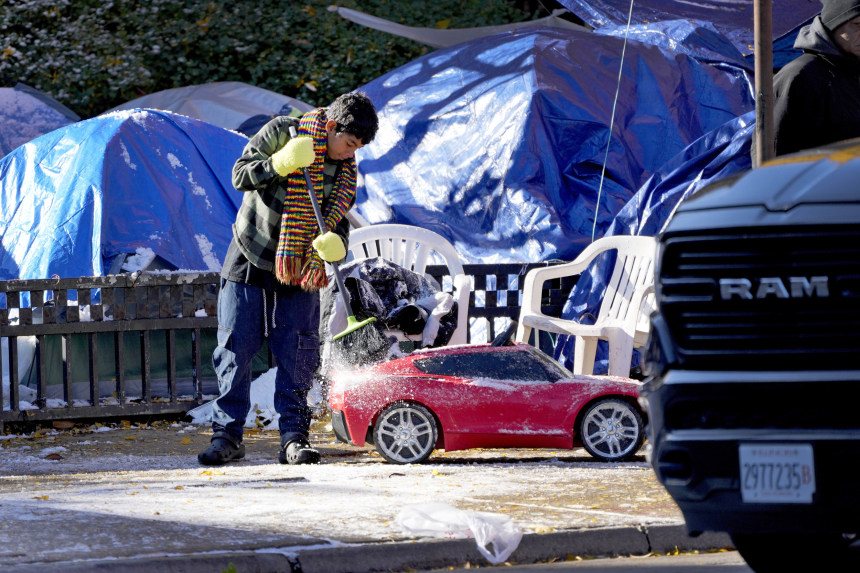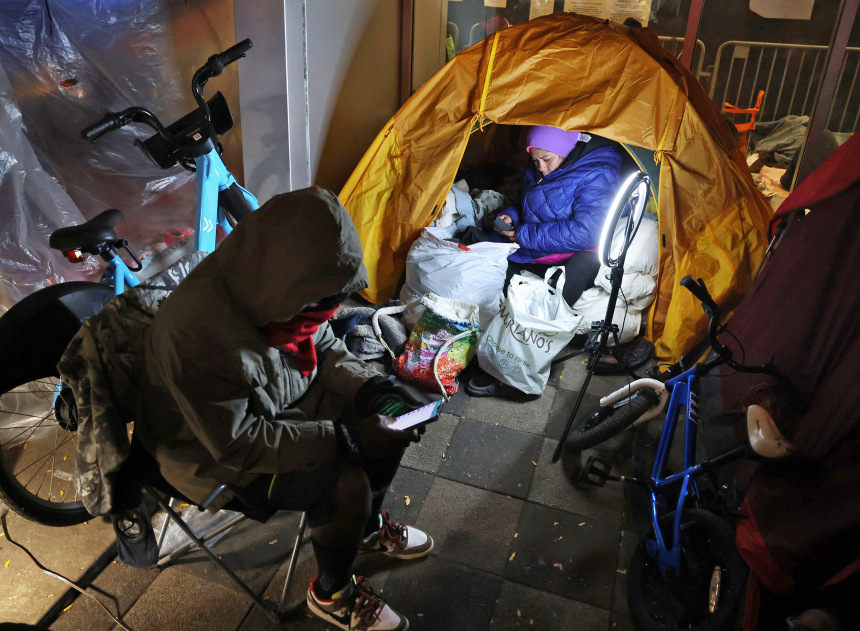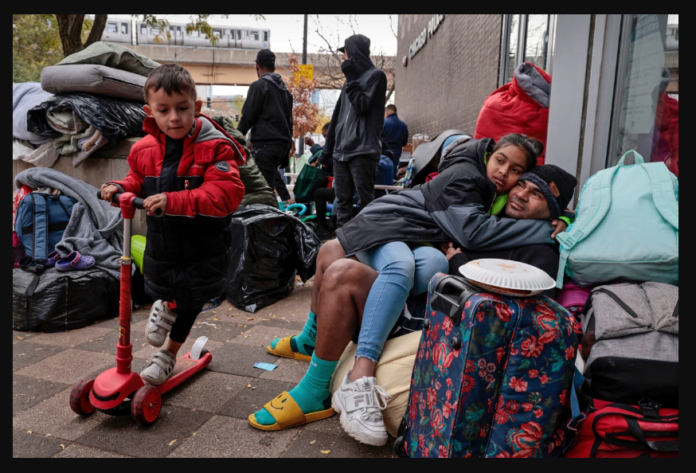In addition to finding long-term accommodation for thousands of migrants already jammed into congested shelters, local and state authorities are working feverishly to locate refuge for over 2,000 migrants who are now living at airports, police stations, and on the streets of Chicago as the city prepares for its harsh winter.
Advocates, however, are unsure whether recently announced initiatives by local and state authorities to facilitate immigrants’ quicker integration into the city would be successful or deepen a humanitarian situation sparked by the busing of thousands of Texans into the city.
Source : NBC NEWS

“The Chicago winter holds great importance,
and we cannot afford for anyone in our lovely state or city to freeze or perish due to our lack of knowledge,” stated Karina Ayala-Bermejo, the president and CEO of the Instituto del Progreso Latino, an organisation that provides case management and other programmes for immigrants.Chicago
According to a municipal census of new arrivals, as of Monday morning, there were 12,251 migrants residing in 26 operational city-run shelters, and an additional 2,175 were waiting to be placed inside and outside of police stations, as well as at O’Hare and Midway airports. The city reports that since August 2022, when Texas Governor Greg Abbott’s migrant busing programme reached Chicago, over 21,700 migrants and asylum seekers had arrived.
The social assistance system in Chicago is under pressure because to the inflow. Not everyone in need has been able to find a place to stay. Advocates have also said that the transition of individuals from makeshift shelters to long-term, independent homes has been agonisingly delayed.Chicago
“The main question is: How do you prioritise an ecosystem that is already in danger?” stated Ayala-Bermejo.
For 35-year-old Johan Martinez Hernandez, who has been looking for an apartment in Chicago for three months while sleeping at a shelter with around 600 other migrants, the housing quest has proven to be “very difficult.” He was bussed into the city, much like thousands of other people, and has since had difficulty getting established.

Martinez Hernandez was hoping that this visit to yet another apartment would be his ticket out of the crowded shelter last week as he was getting ready to go there.
Martinez Hernandez, who came to the United States in search of refuge from Venezuela, said the words “I really hope they rent to me” in Spanish.
He said that moving into an apartment would enable him to get employment legally and provide stability to his life in a new place.
“This is not how you can live forever,” Martinez Hernandez said.
Reducing the number of days that migrants can stay in shelters and the amount of rental assistance they can receive are new limits imposed by the state and city as part of a plan to eventually move people out of shelters and into permanent housing. The stated objective of these measures is to get people into independent living more quickly.
In an effort to relieve “bottlenecks” in the “asylum-seeker resettlement pipeline,” Governor J.B. Pritzker said last week that the state will spend an extra $160 million. The governor claims that this includes: $65 million to increase access to case management, housing aid, and legal services; an additional $65 million to build “winterized” temporary housing for up to 2,000 migrants, ensuring that they have a warm and safe place to live during the winter; and $30 million to establish an intake centre.

Additionally, the state is cutting down on its rent aid for asylum seekers staying in shelters, from up to six months to only three months. According to the governor’s office, this would make the rent-assistance programme “accessible to all current shelter residents.” The state said that “housing assistance will still be provided to support the housing search process, tenant rights, and landlord-tenant communications,” but that the programme would no longer be accessible to newly arrived migrants.
Mayor of Chicago Brandon Johnson, meanwhile, said that the city will start capping a person’s stay at a shelter at sixty days.
On its website, the city said that the purpose of the 60-day restricted stay restriction is to hasten the process by which newly arrived individuals interact with the emergency shelter system. In addition to meeting the immediate needs of new people and families who arrive in Chicago every day, the City can continue to assist current residents on their path to self-sufficiency by giving them direct access to public benefits and other supports during their 60-day stay.Chicago
The city said that “under extenuating circumstances,” such as “medical crises or extreme cold weather,” interim extensions may be given to migrants. A migrant may return to the city’s “landing zone” and ask for a fresh shelter placement if they are not qualified for an extension and have not yet found lodging, according to the city.
The modifications, according to advocates, might make it more difficult to secure shelter and could cause asylum-seekers to slip through the gaps and end up on the streets in the freezing cold.
The Rev. Kenneth Phelps, who assists migrants in finding accommodation and participates in several programmes to help them adjust to life in Chicago, described the cut in rent assistance as “like a gut punch for me.” “It tightly ties our hands together.”
Phelps said that since the majority of asylum-seekers do not currently have work permits and lack the paperwork typically required during the renting process, it has already proven challenging to locate landlords and property managers able to rent to migrants with up to six months of rental assistance. He was afraid that cutting down on the programme would make it seem even more difficult.
“I feel really let down. The city will not be able to fulfil its commitments in any manner, according to Phelps.
According to Ayala-Bermejo, “intensive case management” would be necessary if shelter stays were limited to 60 days in order to ensure that migrants didn’t miss out on social assistance and housing chances.
“We need to be careful not to discard all the positive efforts that have been made in that person, that family, as they will be lost if they simply start living on the streets and increase the number of homeless people,” the woman said.
In order for the migrants to be able to support themselves, she said, the municipal, state, and federal governments should continue to invest in them once they find accommodation, “to work authorization, work development, and work opportunities.”
“Once they get a job, you can’t just pull the rug out from under them,” she said. “You need to keep funding the case management and other support services that will enable them to maintain their employment, as well as making rent payments so they don’t become homeless.”
While finding housing may be more difficult in light of the program’s three-month rental assistance limit, Matt DeMateo, CEO of New Life Centres of Chicagoland, a nonprofit that assists the state with resettlement, noted that more migrants may eventually be able to take advantage of it.
According to DeMateo, the state’s goal to submit 11,000 applications by February for temporary protected status and work permits will also help with the immigration situation.
“People can get on a stable path once that opens up,” he said. “With all of those investments, the goal is to improve the system as a whole so we can overcome these obstacles and move past this.”
The state said last week that since August 2022, almost 9,000 migrants had been relocated in Illinois and other states, either with family members or in permanent housing.
Oscar Peñalver Sanchez aspires to join them in the near future. He just moved into an apartment of his own after spending almost a year living in a shelter with over 150 other immigrants.
He said in Spanish, “It’s a huge relief because it’s difficult to stay in the shelters for so long,” but he was also appreciative of having “somewhere to sleep and lay our heads.”
In an attempt to get closer to his goal of financial independence, he is now seeking for a work visa.
He said, “I want to work and take on life head-on.”





